Related Research Articles

Pavia is a town and comune of south-western Lombardy in northern Italy, 35 kilometres south of Milan on the lower Ticino river near its confluence with the Po. It has a population of c. 73,086. The city was the capital of the Ostrogothic Kingdom from 540 to 553, of the Kingdom of the Lombards from 572 to 774, of the Kingdom of Italy from 774 to 1024 and seat of the Visconti court from 1365 to 1413.

Victor Emmanuel II was King of Sardinia from 1849 until 17 March 1861, when he assumed the title of King of Italy and became the first king of an independent, united Italy since the 6th century, a title he held until his death in 1878. Borrowing from the old Latin title Pater Patriae of the Roman emperors, the Italians gave him the epithet of Father of the Fatherland.

Magenta is a town and comune in the Metropolitan City of Milan in Lombardy, northern Italy. It became notable as the site of the Battle of Magenta in 1859. The color magenta takes its name from the battle, most likely referring to the uniforms used by Zouave French troops.
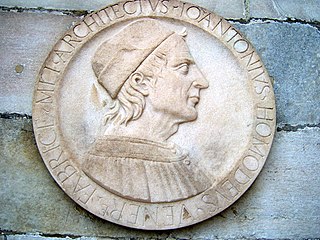
Giovanni Antonio Amadeo was an Italian Renaissance sculptor of the Early Renaissance, architect, and engineer.

Novara is the capital city of the province of Novara in the Piedmont region in northwest Italy, to the west of Milan. With 101,916 inhabitants, it is the second most populous city in Piedmont after Turin. It is an important crossroads for commercial traffic along the routes from Milan to Turin and from Genoa to Switzerland. Novara lies between the rivers Agogna and Terdoppio in northeastern Piedmont, 50 kilometres (31 mi) from Milan and 95 kilometres (59 mi) from Turin.

Benedetto Briosco (c.1460–c.1517) was an Italian Renaissance sculptor and architect, active in Lombardy.
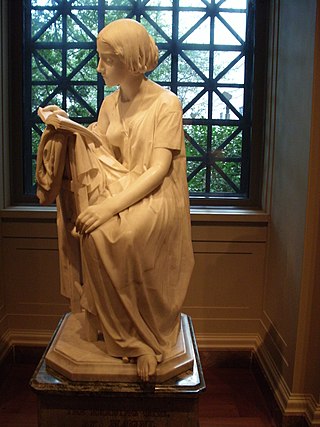
Pietro Magni was an Italian sculptor. Born in Milan, he studied at that city's Accademia di Belle Arti di Brera before moving to the workshop of Abbondio Sangiorgio. Later in his career he became influenced by Tuscan sculptor Lorenzo Bartolini, whose work he first encountered in 1837. He traveled to study in Rome, joining Giuseppe Garibaldi in 1849. He is best known for his Girl Reading, first carved in 1856; today the original may be seen in Galleria d'Arte Moderna, Milan, while copies exist in numerous other museum collections, e.g. in Palácio Nacional da Ajuda, Lisbon. Among Magni's other works are a public monument to Leonardo da Vinci on Piazza della Scala and several marble sculpture groups; he also executed statues for the Milan Cathedral in the 1860s.

Agostino Bertani was an Italian revolutionary and physician during Italian unification.

Porta Sempione is a city gate of Milan, Italy. The name is used both to refer to the gate proper and to the surrounding district (quartiere), a part of the Zone 1 division, including the major avenue of Corso Sempione. The gate is marked by a landmark triumphal arch called Arco della Pace, dating back to the 19th century, although its origins can be traced back to a gate of the Roman walls of Milan.
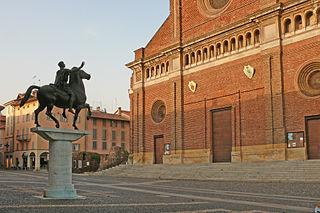
The Regisole was a bronze classical or Late Antique equestrian monument, highly influential during the Italian Renaissance but destroyed in 1796. It was originally erected at Ravenna, in what is now Italy, but was moved to Pavia in the Middle Ages, where it stood on a column before the cathedral, as an emblem of communal pride and Pavia's deep connection with imperial Rome.
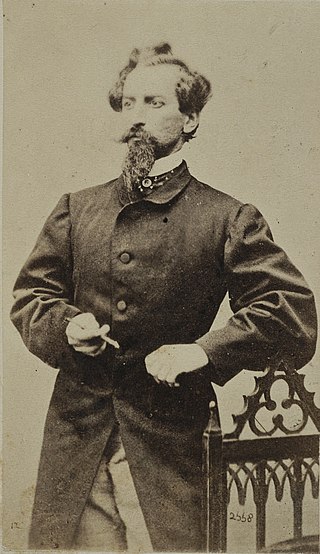
Francesco Nullo was an Italian patriot, military officer and merchant, and a close friend and confidant of Giuseppe Garibaldi. He supported independence movements in Italy and Poland. He was a participant in the Five Days of Milan and other events of the revolutions of 1848 in the Italian states, Sicilian Expedition of the Thousand in 1860 and the Polish January Uprising in 1863. His military career ended with him receiving the rank of general in Poland, shortly before his death in the Battle of Krzykawka.
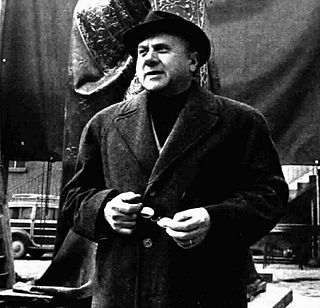
Francesco Messina was an Italian sculptor of the 20th century.

Francesco Daverio was a patriot of the Italian unification, Chief of Staff of the Roman Republic, and an engineer, who died on the Janiculum defending the Casino dei quattro venti.
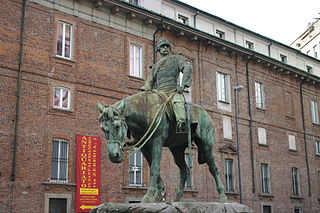
Giuseppe Missori was an Italian patriot, military leader during the Italian unification, and politician. He served under Garibaldi during the Second Italian War of Independence, the Expedition of the Thousand, and the Third Italian War of Independence. After the unification of Italy, he was twice a member of the City Council of Milan.
Giulio Branca was an Italian sculptor, active mainly in Milan.

The Tower of San Martino della Battaglia is a monumental building erected in 1878, to commemorate the Battle of San Martino, a portion of the Battle of Solferino in 1859, located near San Martino, province of Brescia, region of Lombardy, Italy.
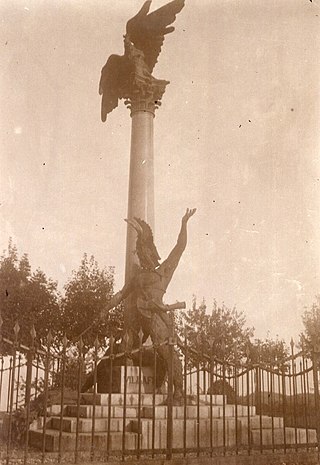
Tancredi Pozzi was an Italian sculptor.
Achille Sfondrini was an Italian architect specializing in the design, construction and modernization of theaters. He was born and died in Milan.

The Equestrian monument to Vittorio Emanuele II is an equestrian statue of the former King Vittorio Emanuele II, located in the Piazza Vittorio Veneto, a small green spot at the east end of the Parco delle Cascine, located along the Arno River, just west of central Florence, region of Tuscany, Italy.
The Monument and Memorial Ossuary to the Defenders of Belgrade 1914–1918, are First World War memorials in Belgrade. Due to its location in Novo Groblje, the memorials are less accessible to broader public.
References
- ↑ Dizionario degli Artisti Italiani Viventi: pittori, scultori, e Architetti., by Angelo de Gubernatis. Tipe dei Successori Le Monnier, 1889, page 387.
- ↑ Pavia e Dintorni site.
- ↑ "Ossuary and Monument for Battle of May 20, 1859". Archived from the original on November 8, 2014. Retrieved July 4, 2013.